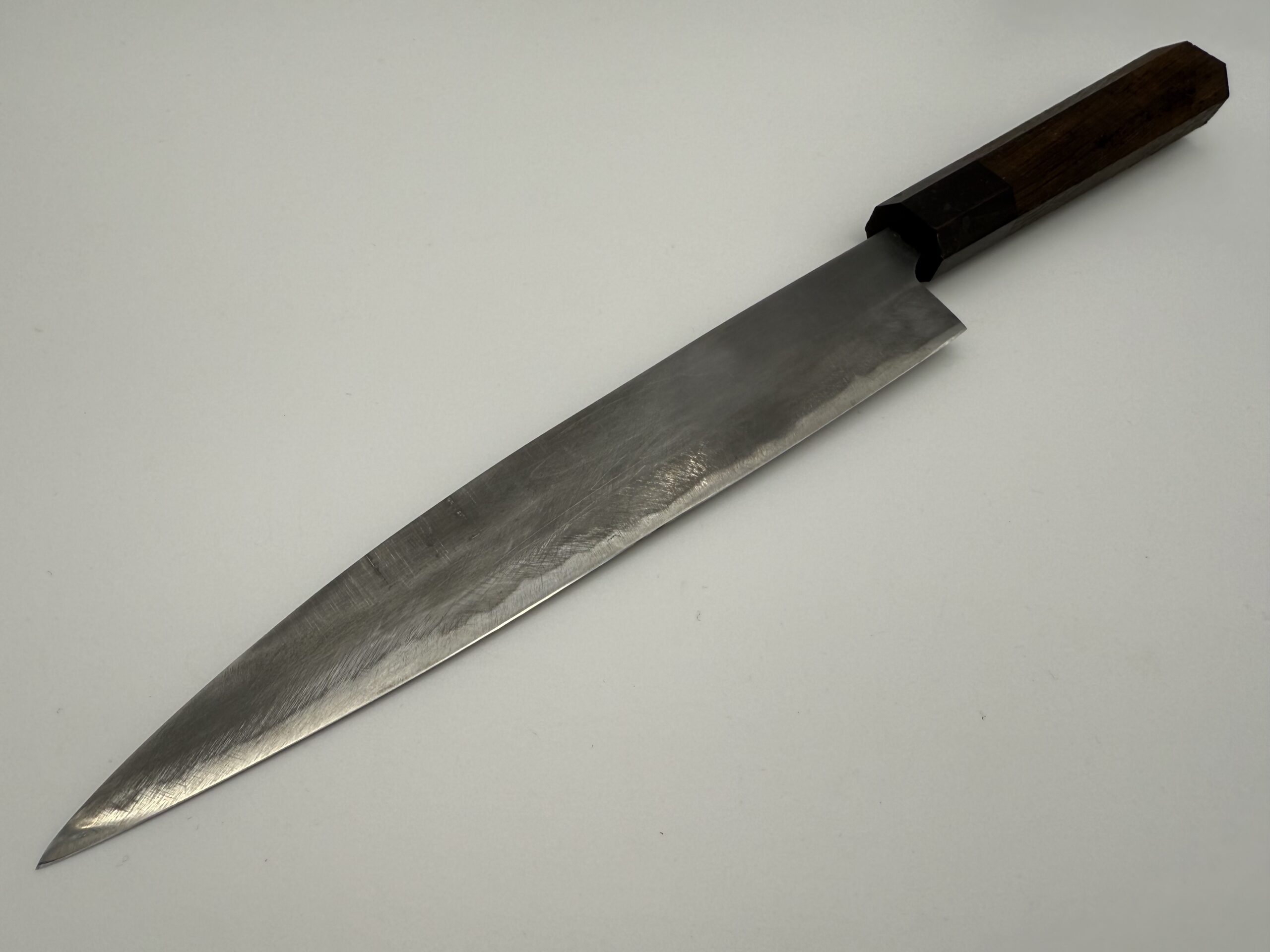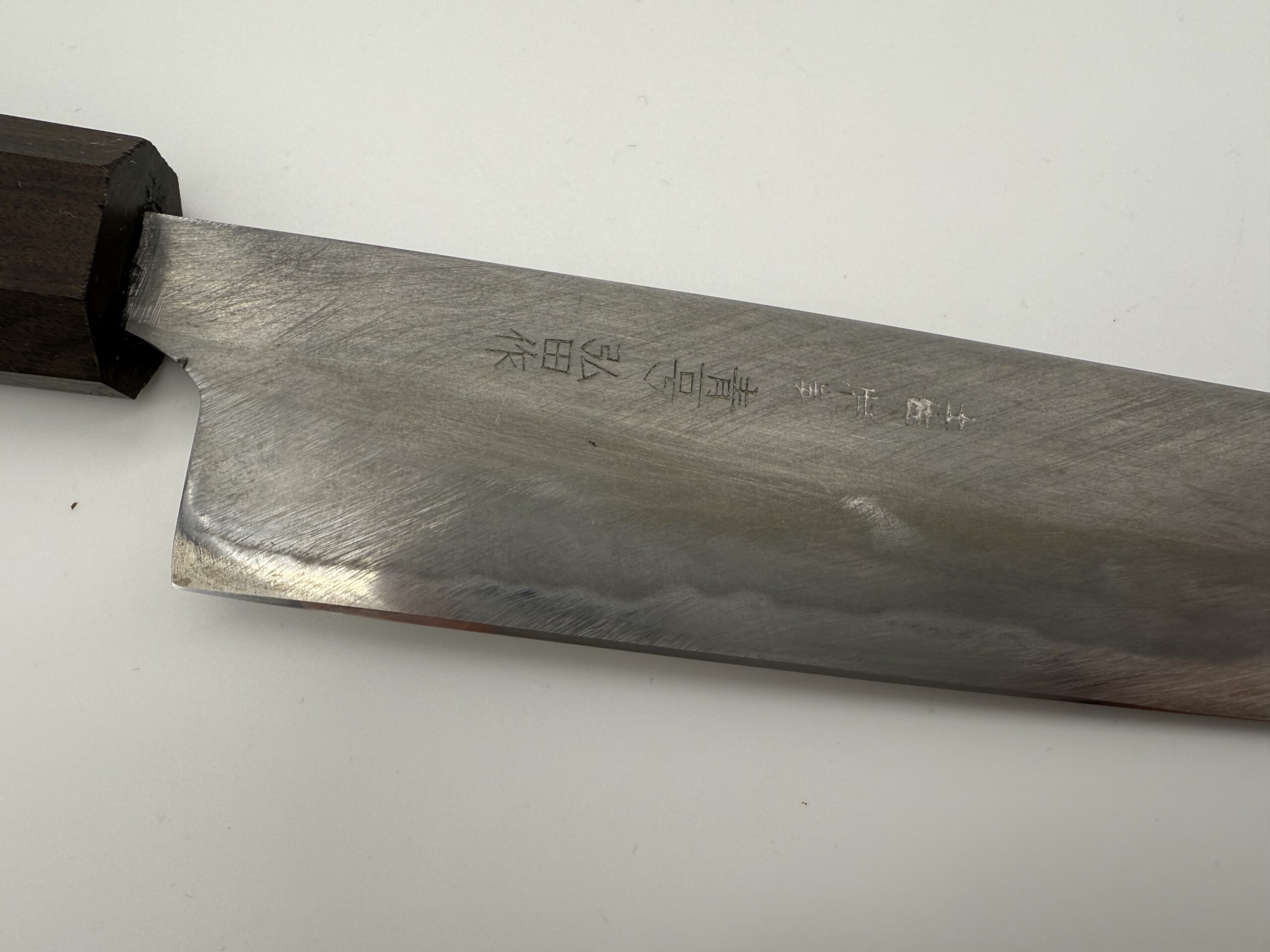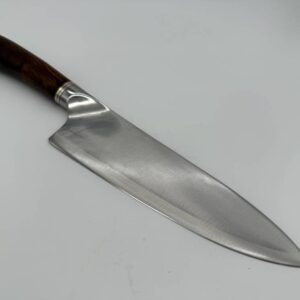The Tosa-Uchi Sujihiki Aogami Slicer is a traditional Japanese knife originating from the Tosa region (Kōchi Prefecture, Shikoku Island, Japan), which is famous for its long-standing blacksmithing tradition. Here is some basic information about this knife:
1. Purpose of the Sujihiki knife
- Sushi (Japanese for "meat slicer") is a Japanese knife designed for precise cutting of meat and fish, especially when preparing thin slices such as sashimi or nigiri. Its long, narrow, and thin blade allows for a smooth, single-motion cut, minimizing tissue damage and preserving the texture and flavor of the food.
- Compared to a Western paring knife, a sujihiki is sharper and lighter, making it ideal for delicate tasks such as filleting or skinning fish.
2. Tosa-Uchi features
- Tosa region: Tosa is known for its rustic-style knives, which are often hand-forged (called "free-forged"). These knives are strong and functional, reflecting the region's agricultural and fishing traditions.
- Uchi: The term "uchi" can refer to a forging technique or a specific school of blacksmithing in the Tosa region. It is often associated with traditional methods where knives are made with minimal polishing, maintaining a natural, rough surface.
3. Aogami steel
- Aogami ("blue paper") is a high-quality carbon steel produced by Hitachi Metals in Japan. It is highly regarded for its ability to achieve extreme sharpness and maintain it for a long time.
- Aogami steel comes in several types:
- Aogami #1: Contains more carbon (about 1.2-1.4 %), so it is harder (HRC 61-63), but slightly more brittle.
- Aogami #2: Slightly less carbon (about 1.0-1.2 %), so it is a little more flexible and easier to sharpen, but still hardens quite hard (HRC 60-62).
- Aogami Super: A premium option with additional alloying elements (chromium, molybdenum, vanadium) providing even slightly better corrosion resistance and hardness (HRC 62–64).
- Aogami is carbon steel, so it is not rust-resistant. Over time, a patina may form on the knife, which protects the steel, but proper care is necessary (wash and dry immediately after use, avoid prolonged contact with acidic foods).
4. Knife construction
- San-mai lamination: Aogami steel is used here as the core of the knife, encased in a softer steel or iron. This increases the strength of the knife and reduces brittleness.
- Handle: Traditionally, sujihiki knives have a Japanese "wa" handle (often oval or octagonal in shape), made of wood such as rosewood, magnolia or walnut, sometimes with a horn or plastic blister. The handle is suitable for both right-handed and left-handed users.
5. Advantages
- Sharpness: Aogami steel allows you to achieve an extremely thin and sharp edge, ideal for precision cutting.
- Easy to sharpen: Although carbon steel requires maintenance, it is easily sharpened on water stones.
- Aesthetics: The Kuro-uchi finish and handmade details give the knife a unique, authentic look.
- Functionality: A long, thin knife is perfect for cutting large pieces of meat or fish in one smooth motion.
6. Disadvantages
- Maintenance: Aogami steel is reactive, so regular cleaning and lubrication are necessary to prevent rust.
- Fragility: Due to its high hardness, the knife may be more sensitive to impacts or improper use (e.g. when cutting bones).
- Price: High-quality handmade knives from the Tosa region can be expensive, especially if made by renowned craftsmen.
7. Tips for using
- Usage: Sujihiki is designed for cutting soft tissues (meat, fish), so avoid cutting hard ingredients such as bones or frozen products.
- Maintenance: After use, wash the knife by hand, dry it and store it in a dry place. You can use a light layer of oil (e.g. camellia oil, balistol) for protection.
- Sharpening: It is recommended to sharpen on Japanese water stones (grit 1000 to 6000) to maintain optimal sharpness.
- Storage: Store your knife in a wooden box (saya) or knife holder to protect the edge of the blade.












Reviews
There are no reviews yet.